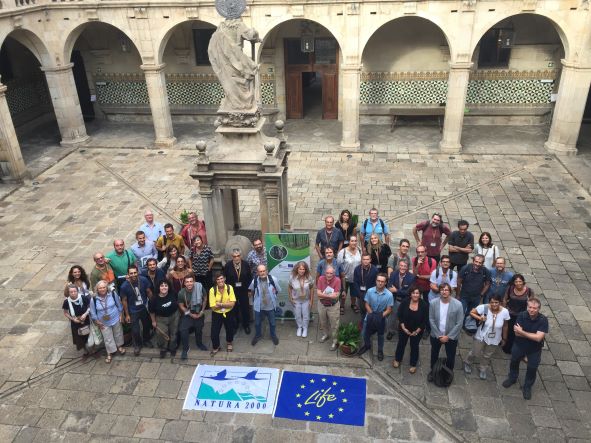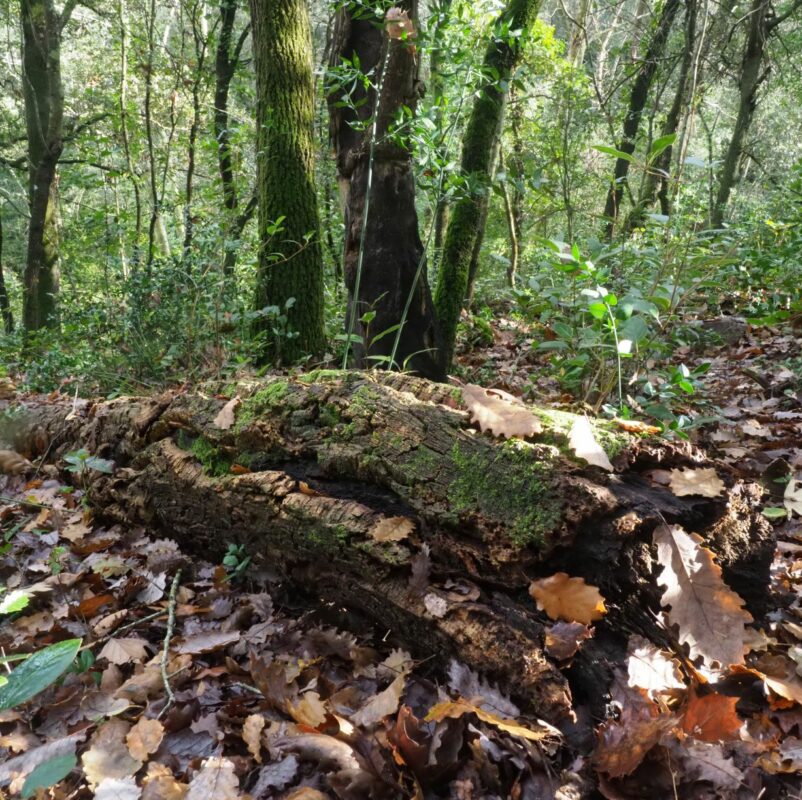The LIFE Biorgest project shows that sustainable forest management is key to improving biodiversity, developing tools to facilitate it
Important consensuses have been reached among administration, scientists, conservation, and forest ownership fields.
Within the framework of the project, which has lasted five years, easy-to-use tools and guidelines have been created for forest owners and managers.
This September saw the end of the LIFE Biorgest project to improve biodiversity in Mediterranean forests through forest management. Over five years, dozens of actions have been carried out on more than 200 demonstration hectares in Catalonia and Occitania, to test the capacity of multifunctional forests to increase their biodiversity and to influence forest maturity processes. The results are very good, as consensus have been reached on complex issues such as assessing the potential biodiversity of a forest and its degree of maturity, as well as on the practices and work to be carried out to improve biodiversity and the incentives to make it easier for forest owners to invest in them.
The effect of these actions and the analysis of 185 inventories in managed forests has made it possible to determine that the forestry work carried out does not have a negative effect on biodiversity. On the contrary, the practices incorporated into these works will have a direct effect on the increase of some groups of bioindicators of the good health of forests, such as bats or saproxylic insects that live in tree cavities and climbing birds, among others, as well as plants and fungi.
To measure these parameters, the promoters of the project have developed a tool that evaluates the capacity of forests to host different species of plants, animals, and fungi. This is the Potential Biodiversity Index (PBI), an instrument to support forest planning and management, designed by specialists to facilitate the integration of biodiversity conservation criteria in the multifunctional management of forests. This tool is the result of several years of work by scientists and experts in the world of forest conservation and management, and one of its virtues is that it is designed to be used by people who are not experts in naturalistic knowledge. The IBP is based on a 20 to 40 minute field assessment of the 10 factors of forest structure and associated habitats that most significantly influence the biodiversity that the forest can support.
The effects of climate change, one of the main threats to the forest
The project partners presented the final results of LIFE Biorgest at a conference held at the Institut d’Estudis Catalans in Barcelona, where it became clear that the effects of climate change are one of the main threats to forest conservation. Also that sustainable forest management, integrating biodiversity conservation practices, is one of the best tools to face such a threat. Considering that in Catalonia 80% of the forest area is privately owned, foresters are a key figure for this conservation objective.

In fact, Catalonia is already a global benchmark in the promotion of sustainable forest management, and the project has also served to demonstrate that it is necessary to continue facilitating consensus among foresters and forestry and nature conservation professionals, placing value on the ecosystem services of forests that are not paid for, and incorporating incentives that contribute to the payment of these environmental and social services of the forest.
The project’s conclusions also focus on the positive impact of biodiversity on forest adaptation to climate change and the role of mature forests in the conservation of said biodiversity.
Highly positive socioeconomic impact
At the same time, the socio-economic evaluation report of the project was presented, a document that concludes that the implementation of LIFE Biorgest has entailed the hiring of 68 people to carry out its actions and has had the participation of 623 people in its 15 training sessions carried out in the field and also telematically. The report also highlights the technical and scientific impact, since 40 articles have been published throughout the project. For this study, 52 indicators were taken into account for aspects such as employment, impact on the local economy, training, technical and scientific impact, dissemination of the project, as well as its relevance in the regulatory and planning framework. In this last area, it should be noted that the results of LIFE Biorgest have allowed to lay the foundations on the best way to encourage and promote integrative forestry, with the publication of aids to forest ownership, and have also contributed to the establishment of proposals for a change in the administration guidelines for the management of forests in Catalonia.
With the actions carried out throughout the five years of LIFE Biorgest, the main objective of the project has been achieved, which is to reinforce the role of forest ownership and forestry as an asset for the conservation and improvement of biodiversity.
LIFE Biorgest has been coordinated by the Forestry Consortium of Catalonia and has counted with the participation of the Center for Forest Ownership (CPF), CREAF, the Forest Science and Technology Centre of Catalonia (CTFC), the Nature Conservation Network (XCN) and the Centre National de la Propriété Forestière (CNPF), in France. The project has been co-financed by the LIFE program of the European Union, the Generalitat de Catalunya and the Diputació de Girona.
Thus, the project integrates a multidisciplinary team of forest owners, administration, scientists, and experts from the world of forest conservation and management. And therein lies another of the virtues of this project, which has managed to bring together and add synergies between the administration, research centers, conservation organizations and forest owners, under the premise of joining forces to improve the biodiversity of our forests.
Last modified: 16 October 2023










